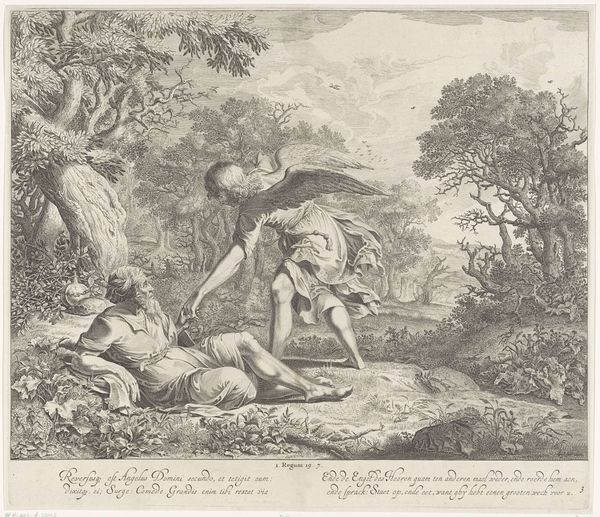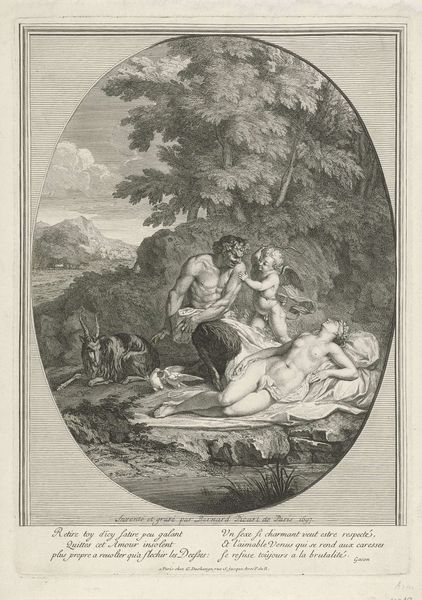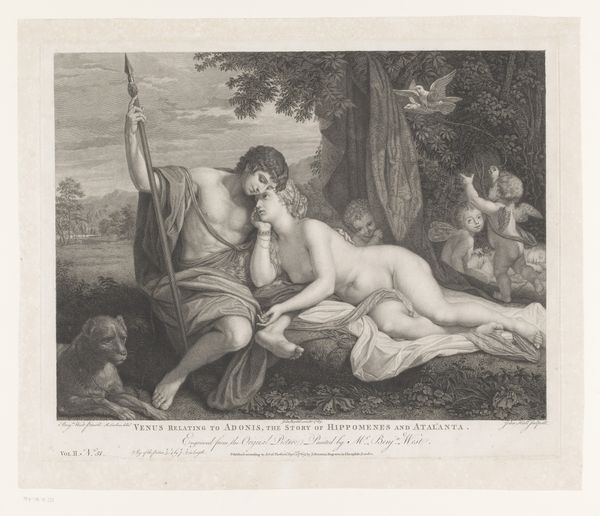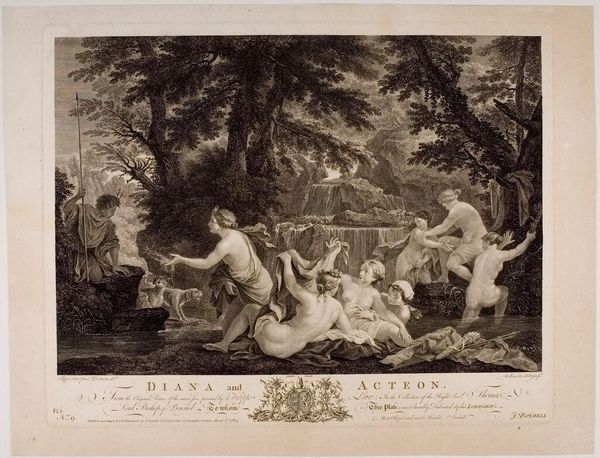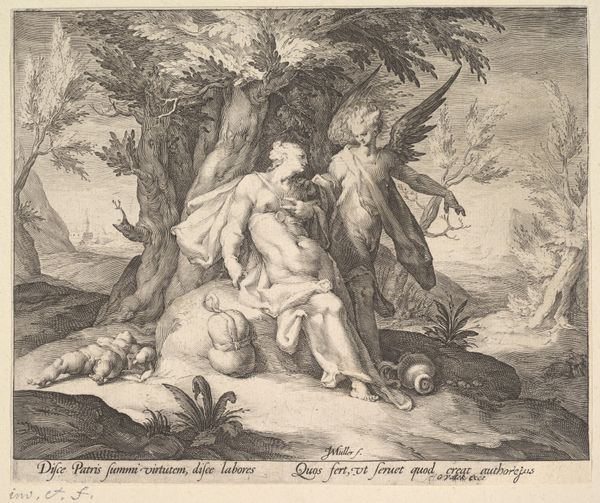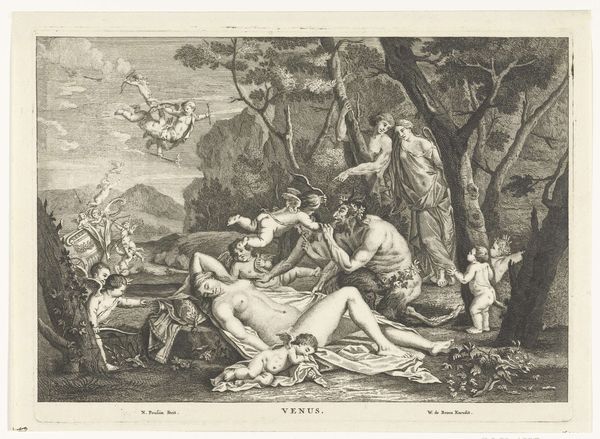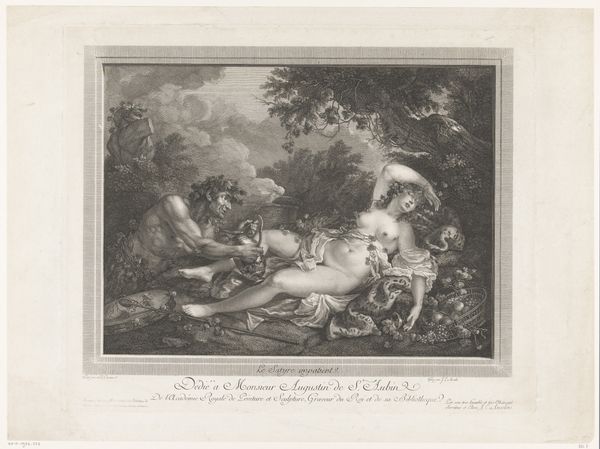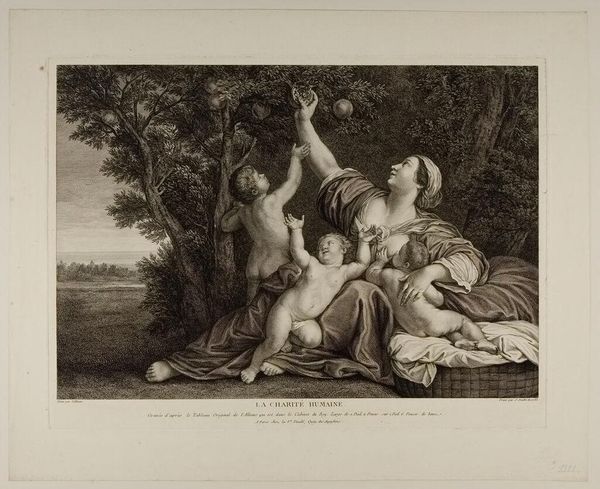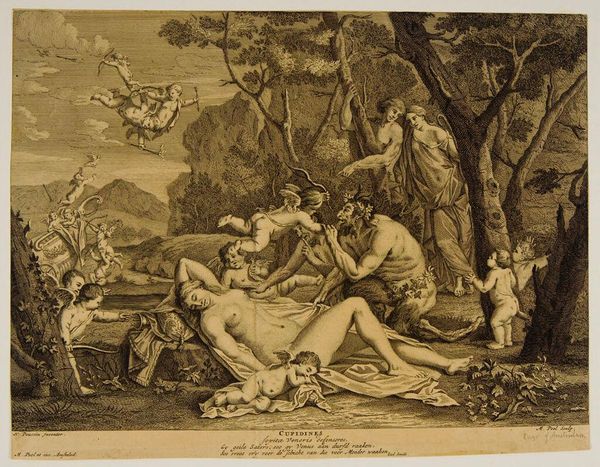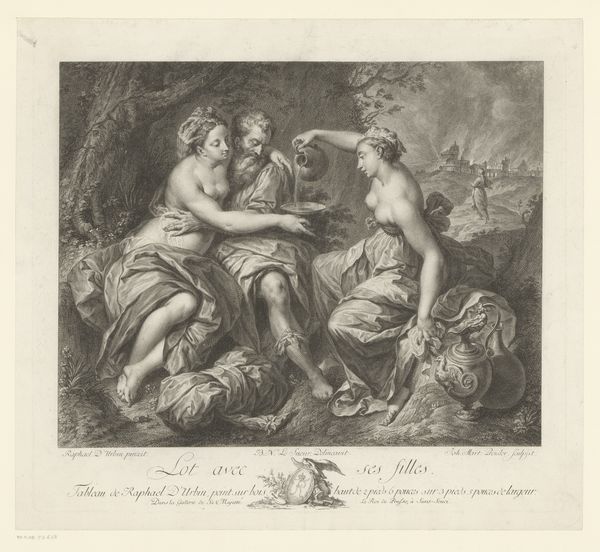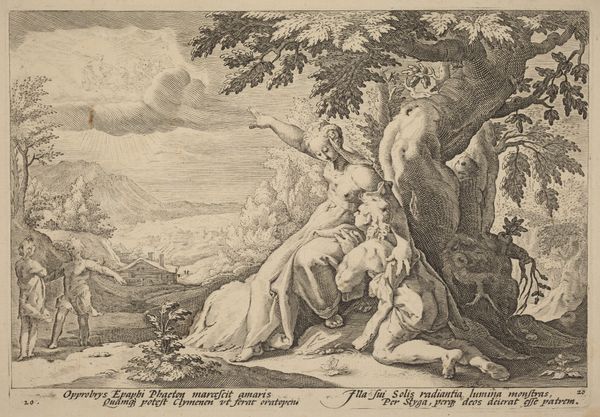
print, engraving
#
baroque
# print
#
landscape
#
figuration
#
mythology
#
history-painting
#
engraving
Dimensions: height 224 mm, width 298 mm
Copyright: Rijks Museum: Open Domain
Curator: This engraving, housed here at the Rijksmuseum, is entitled "Landscape with Venus and Adonis" and it's attributed to Matthijs Pool. It likely dates from between 1696 and 1727. What is your initial take on this depiction of the mythological scene? Editor: The first thing that strikes me is the way the scene blends classical mythology with the everyday. Despite being figures from legend, there’s something intimate and surprisingly domestic about the composition. The reclining pose and the hazy landscape evoke a quiet moment, a world away from grand narratives of gods and heroes. Curator: Absolutely. It’s crucial to consider the prevailing power structures and the artistic trends of the Baroque era, when this work was produced. Pool uses the well-worn trope of mythological painting but also reflects burgeoning capitalist structures wherein love and beauty are commodities, seen through the languid posing. Are these bodies meant to reflect freedom or new forms of constraint? Editor: The symbols offer some answers, I think. Notice how Cupid and another cherubic figure watch the lovers from above, embedded in the clouds and almost encased in what appears to be an urn—vessels of fate, if you will. Adonis, with his hunting spear, also references that doomed prophecy that always haunts this visual narrative. The idyllic setting can’t hide the story’s inherent tragedy. Curator: It’s difficult to divorce images of Venus and Adonis from contemporary discussions surrounding gendered violence, and I think Pool's choice to have them reclining side-by-side is a reflection of that societal struggle, it doesn’t come across necessarily erotic as much as resigned, considering Adonis' ill fate, do you agree? Editor: Yes, absolutely. This piece, like many depictions of Venus and Adonis, resonates because of the tragic juxtaposition—the undying goddess and her mortal lover. We’re not simply presented with love but with a meditation on mortality itself. Curator: Understanding the cultural codes embedded within the artwork expands our ability to think critically about the legacy of representation in shaping today’s discourse on identity and representation. Editor: Exactly. Pool’s vision encourages us to reflect on the power of images across time, how visual symbols persist, evolve, and continue to mold the collective psyche.
Comments
No comments
Be the first to comment and join the conversation on the ultimate creative platform.
